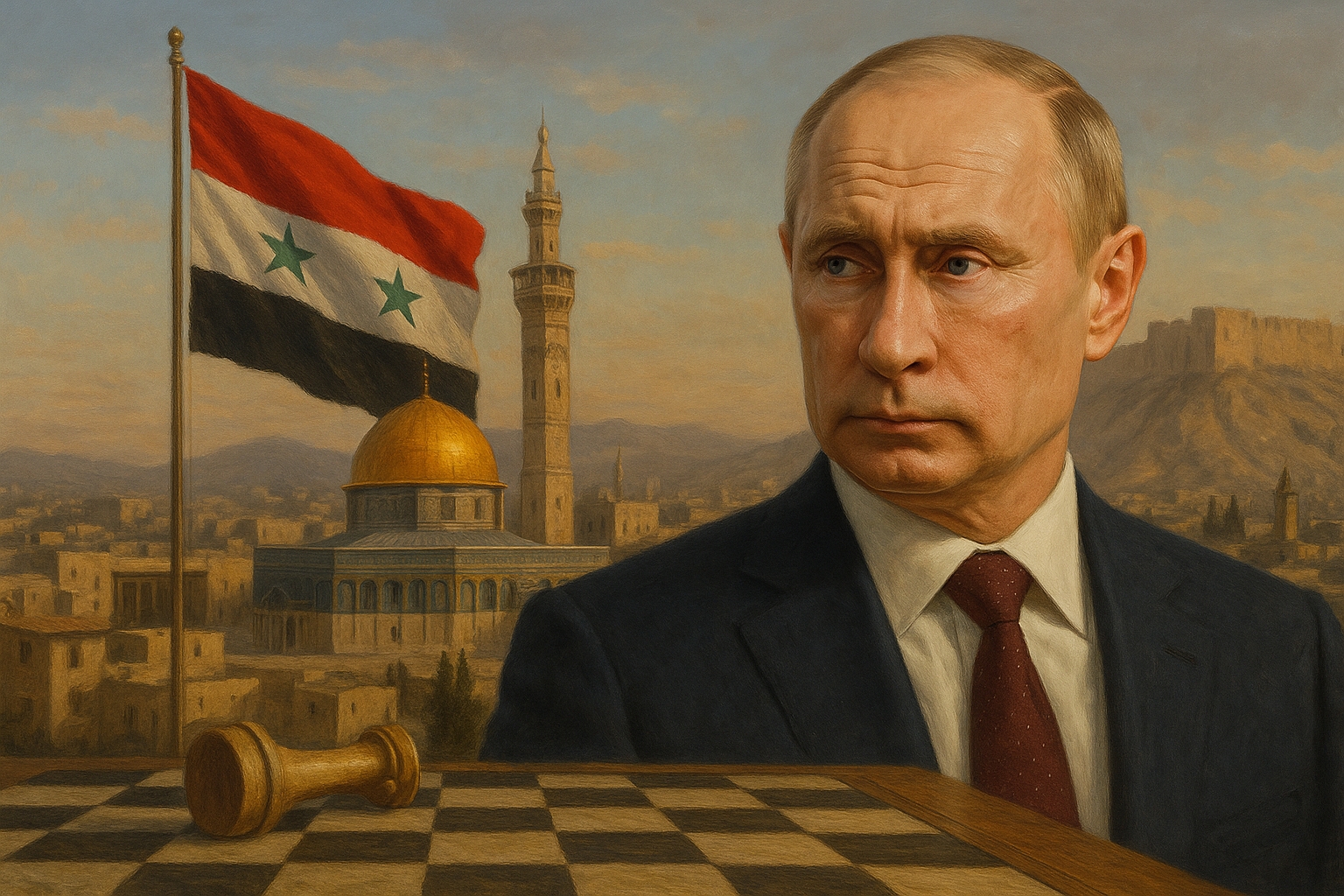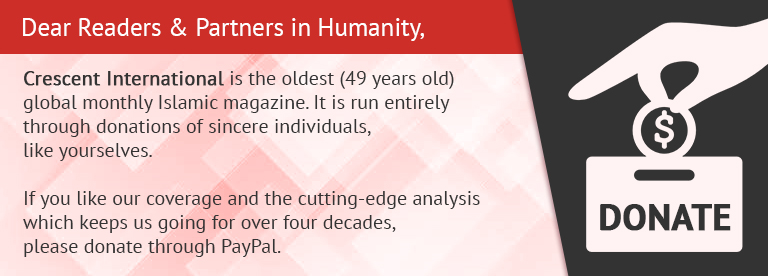



 Ahmet Mehmet
Ahmet Mehmet 
When President Vladimir Putin hosted the new Syrian ruler Ahmed al-Sharaa in Moscow on October 15, many supporters of Russia’s involvement against western- and Israeli-backed terrorist groups in Syria took notice. Some viewed the meeting as evidence of Moscow’s lack of political principles; others assessed it mainly through an emotion laden angle.
Such assessments often stem from a limited understanding of the real reasons behind Russia’s direct involvement in the Syrian proxy war in 2015. Moscow’s intervention was driven primarily by domestic political considerations—particularly those connected to the image and legitimacy of Putin’s presidency—rather than by purely foreign policy objectives.
One of the main pillars of Putin’s political credibility and rise to power was his ruthless war against the Chechen pro-independence movement.
The emergence of a semi-independent Chechen state between 1991 and 1999 in the strategically crucial North Caucasus posed a grave challenge to Russia’s territorial integrity.
For Putin, preventing a recurrence of such conflict became a matter of great importance—a test of his ability to reassert central authority and restore the image of a strong, unified state.
Those who followed the Syrian war since 2011 know that a considerable number of fighters among the US- and Israeli-backed groups were wahhabi–takfiri militants from Russia’s North Caucasus. Their establishment of a stronghold in Syria raised the possibility that these militants could again threaten Russia, this time with greater resources, weaponry, and foreign backing.
While not an immediate existential threat, this would risk reigniting conflict within Russia and undermine Putin’s legitimacy, built on restoring internal stability.
From this perspective, Russia’s 2015 intervention in Syria was not merely foreign policy maneuvering—it was a pre-emptive move to contain a potential internal threat.
By engaging the North Caucasian militants and their sponsors abroad, Moscow sought to neutralize instability at its source. Syria thus became both a symbolic and practical extension of Russia’s internal security strategy—a battlefield to preserve domestic order and reinforce Putin’s image as the guarantor of unity and strength.
Russian journalist and former Presidential Council member Maxim Shevchenko, in a 2020 interview with Echo of Moscow, noted that Russia entered the Syrian war relatively late—after the Syrian government, backed by Iran, Hizbullah, and Liwa al-Quds, had already reversed major rebel gains. He argued that Moscow’s intervention consolidated these successes, but also ensured Israel faced no direct challenge on the Golan Heights by limiting Iranian influence in Syria.
So, why did Russia later appear willing to tolerate western-backed takfiri forces in Damascus?
Moscow was never “okay” with such a scenario—it simply had greater strategic priorities to manage, foremost among them countering western expansion into its traditional sphere of influence.
With the outbreak of the war in Ukraine in February 2022, the primary arena of confrontation shifted from Syria to Eastern Europe.
Evidence of takfiri militant networks being redeployed from Syria to the Ukrainian front began to emerge. Syria, while still important, became a secondary front in a much larger geopolitical contest.
The ongoing indirect war with NATO in Ukraine now takes precedence for Moscow.
If takfiri factions in Damascus can assure the Kremlin that militants from the North Caucasus and other former Soviet regions will not be used against Russia, Moscow may appear willing to tolerate their presence.
This pragmatic trade-off allows it to focus on the more critical Ukrainian front.
The HTS militia’s crackdown on fighters from the post-Soviet space further reassures Moscow that this threat is under control, at least for now.
In a post-Ba‘athist Syria, Russia’s approach will be calibrated according to Türkiye’s behavior in the Caucasus and Central Asia.
Ankara’s position in Syria depends heavily on Moscow for both economic and logistical reasons, particularly Russian grain exports.
Historically, Russia has used such dependencies to restrain Turkish ambitions, as seen during the 2016–2017 Astana process. Should Türkiye undermine Russian interests in its near abroad, Moscow could easily destabilize Syria and dismantle the political structures Ankara seeks to consolidate there. Syria thus remains one of Moscow’s key levers to influence Türkiye’s broader geopolitical conduct—consistent with its traditional policy in West Asia.
For Russia, West Asia has long served as a geopolitical bargaining chip in its wider confrontation with NATO.
From the Soviet era to the present, the region has functioned less as an arena of ideological commitment and more as a tool of strategic leverage.
Russian policymakers use engagement in West Asia to extract influence or concessions on issues closer to home, whether in Eastern Europe, the Black Sea, or the Caucasus. Given this enduring logic, Moscow’s approach is unlikely to change soon. The region will remain a means of influence rather than a space for principled alignment.
A key question for many Muslim analysts is how Russia will act amid the escalating regional war that began in Palestine in 2023. While exact moves are unpredictable, three constants define its approach.
First, Russia will avoid an aggressive stance toward apartheid Israel, as the zionist lobby—though weaker than in the US—retains influence in Russian political and business circles.
Second, Moscow will not openly side with Iran against the Israel–EU–US axis but will not allow Tehran’s defeat, since a weakened Iran risks destabilizing the Caucasus and Central Asia.
Third, Russia will continue supporting the Palestinian cause politically to maintain goodwill among the Arab public and strengthen its standing in the Global South—an asset it values amid the protracted war in Ukraine.
In sum, Russia’s conduct in Syria and West Asia is guided not by ideology but by calculated pragmatism.
Moscow views the region as a strategic buffer and bargaining arena to protect its southern flank, counter western encroachment, and preserve its great-power status. Syria remains both a symbol and an instrument of this strategy—a manageable conflict zone enabling Russia to project power and balance rivals without overstretching.
As the geopolitical storms over Palestine, Iran, Yemen, Lebanon and Ukraine persist, Russia’s actions in Syria will continue to follow the principle that has defined its policy since 2015: managing instability abroad to preserve stability at home and maintain primacy in the Caucasus and Central Asia.
